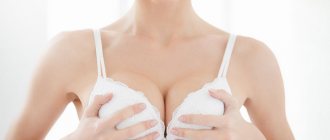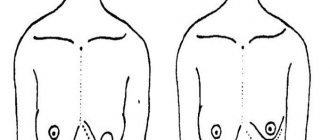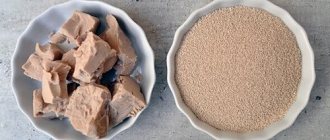In an effort to make the bust voluminous and seductive, we sometimes resort to methods much more dangerous than installing implants. The saddest thing is that these methods are called natural.
When I say “we,” I am, of course, lying: I never wanted to increase my size four and I know very well how much inconvenience it causes. Alas, most of my friends refuse to believe this and regularly torment themselves with all sorts of “super natural” and “absolutely safe” means of breast enlargement. The result, when it exists at all, is sad: for example, one of my friends got a massive hematoma after a vacuum chest massage.
Alas, no one learns from other people's mistakes. According to the International Society of Surgeons in 2010, about 500,000 women suffered health problems after using pills and creams, as well as various mechanical devices for breast enlargement.
“They are all unhelpful at best and harmful at worst,” explains Lisa Harrett, a member of the British Association of Breast Examiners. “There is not a single official evidence of the successful use of such means.”
When it comes to dietary supplements, they all contain estrogen and progesterone analogues, and this is very dangerous. “Uncontrolled intake of hormones can lead to a variety of disorders, including cancer,” says Gasan Gaibudullin, oncologist surgeon and mammologist. — Manufacturers usually emphasize the “naturalness” of these products - they say, only phytohormones from rare Thai plants. But the use of unknown herbs makes these dietary supplements even more dangerous. There’s nothing to say about all kinds of pumps and attachments for breast enlargement - in most cases they cause uncontrolled growth of glandular tissue and inflammation.”
You need to know your enemy by sight - this is what you should never use to enlarge your breasts:
1. Gels and creams
. Contains vitamin A, red pepper extract and warming essential oils - such as coffee and cinnamon. It sounds innocent, but in fact it causes a rush of blood to the chest and, as a result, its temporary swelling. There is no talk of any permanent effect, but redness and itching are guaranteed.
2. Plasters
. As a rule, the patch contains a pure extract of hops, which your grandmother probably recommended to you for these purposes, as well as the much-advertised Pueraria mirifica (from a Thai grandmother: this plant comes from the north of Thailand). Just those same phytoestrogens. They cause painful swelling of the breasts - as, say, when taking OK. The effect is far from natural and ends as soon as you stop gluing the patches.
3. Tablets, dietary supplements.
A cocktail of almost all phytohormones known to mankind: skullcap, black cohosh, soy, ginger and many others. If taken in large quantities over a long period of time, the fat layer in the breast may slightly increase. But the chest will hurt, and after the end of the treatment it will immediately “deflate”. Side effects: at best, weight gain, decreased libido and irritability. At worst, adrenal dysfunction and ovarian cancer.
4. Vacuum massage.
A completely barbaric act, during which the breasts are “pumped up” with an ordinary pump. In this way, the upper glands are stimulated, blood flows to them, and the bust looks lush for about a day. The vacuum is guaranteed to injure the gland, causing adhesions, inflammation and ruptures.
Scary? Hope so. To date, there are only two proven procedures for non-surgical breast augmentation. These are injections of hyaluronic acid and mesotherapy, which, however, provide only a short-term effect (about a year) and still require prior consultation with a mammologist. But there are two absolutely safe and long-lasting ways to maintain the beauty of your breasts - and this is more important than size.
Fitness.
Let's finally admit it: it is impossible to enlarge the mammary gland itself, in which there are no muscles, with the help of fitness. But you can pump up the pectoral muscle, to which the mammary gland is attached. This will give the appearance of a slight increase in bust volume and lift it slightly. If you have small breasts, the effect can be quite noticeable.
Spa treatments for breast firmness
.
They tighten and strengthen the skin of the breast, and can slightly improve its shape.
Have you ever tried these methods? Or have you thought about surgical breast augmentation?
If you are not satisfied with the shape or size of your breasts, then it is quite possible that you have thought about plastic surgery more than once. And you are not alone - according to statistics, more than half of the girls are dissatisfied with the condition of their breasts and would like to change something about them. Another thing is that mammoplasty, more than other operations, is shrouded in myths and legends, as a result of which few people decide to undergo it (most often those whose friends or relatives have experienced a similar surgical intervention and were satisfied).
We asked the plastic surgeon nine exciting questions about breast augmentation, trends in plastic surgery, possible risks, recovery period after surgery - and received quite comprehensive answers to them.
Andryushchenko Olesya Anatolyevna,
plastic surgeon, candidate of medical sciences.
How do you know if surgery is really necessary?
The patient makes the decision about the operation herself; the doctor under no circumstances persuades the person. For our part, we can only explain what we can do in this case and by what means (mammoplasty today can be done in three surgical ways). Initially, the girl herself says what she wants to change: correct, enlarge, remove asymmetry or ptosis of the mammary glands, and only after that we recommend ways to solve the problem.
Moreover, sometimes we refuse surgery. Here, for example, is a recent case: a patient with an already endoprosthetic breast decided to correct the ptosis that had formed after an operation eight years ago and slightly reduce her breasts. I explained to her that this would lead to the appearance of additional scars, and sent her to think carefully.
Medical indications for breast enlargement, if a woman has not given birth, also include breast hypertrophy. And if we are talking about a woman who has already undergone childbirth and has breastfed - post-lactation hypertrophy (often the breasts after lactation may be in a state of ptosis, then endoprosthetics can be performed). In some cases, we resort to the mastopexy procedure.
How to choose a professional surgeon?
That's a very difficult question. Today in Russia there are a very large number of clinics and surgeons, so it is sometimes difficult for a patient to make the right choice. First of all, you should carefully read the surgeon’s resume: you need to look at what education he has, where he trained (in which departments), what surgical experience he has (it must be at least 7 years).
Plus, it is important to pay attention to the reputation of the clinic itself - the success of the operation depends not only on the professionalism of the surgeon, but also on the equipment the clinic uses (and especially on good anesthesia). It’s quite easy to check a clinic - ratings and reviews on specialized forums will come to your aid.
What myth about breast augmentation do most girls still believe?
The most common questions during consultation are, of course, questions about oncology. Most often they ask whether mammoplasty is associated with breast cancer and whether the operation can provoke this type of cancer. However, you should know that endoprosthetics does not cause such problems - this is confirmed by very serious and long-term American research. The point is that the implants are placed under the muscle, so there is no contact with the mammary gland.
If at one point a girl realizes that she wants to return to her previous breast size, how difficult will the operation be?
There have been no such cases in my practice, but if surgery has already been performed, then it is very difficult to return to the original state. And the older the operation, the more difficult it is to return to size, since this is tissue stretching and scarring. Even if the operation lasts a year, these are still changes in the gland. It’s better to think well before surgery than to regret it later and try to get something back.
How big is the risk of infection after breast augmentation or the risk that the implants will not take root?
In my practice, there have been no cases where the implant simply did not take root, but there are individual reactions. For example, some kind of chronic inflammatory process, the formation of seromas. The patient can see it herself: the mammary gland visually enlarges on one side, with no inflammation or redness, just some enlargement. All this may indicate the accumulation of serous fluid, which requires removal.
Basically, complications after surgery depend on the individual characteristics of the patient, as well as on how the rehabilitation period went (it is important that there are no blows or injuries). Even capsular contracture (note: a complication of augmentation mammoplasty, in which a dense capsule of fibrous connective tissue is formed around the silicone implant) occurs due to the characteristics of the body, and, of course, it requires surgical re-intervention.
I heard a lot of unpleasant stories from my colleagues. For example, hitting the steering wheel with your chest during an accident, after which there may be some complications. Moreover, if the patient follows all the doctor’s instructions, then no complications arise.
What restrictions await the patient after surgery?
When breast augmentation is performed with implants, there are a number of prohibitions that are discussed at the first consultation. Basically, the prohibitions are associated with limiting physical activity - we recommend abstaining from this for a month (but depending on certain circumstances, this period may increase). You should also avoid water procedures during which the body steams: first of all, these are saunas and steam baths.
Recommendations also relate to compression garments, which patients after surgery must wear constantly, practically without taking them off, day and night. However, it can, of course, be removed while taking a shower - by the way, you can take a shower during the rehabilitation period calmly, and only during the first week after the operation we advise you to refrain from doing so.
The approximate period of wearing compression garments is 30 days. The underwear protects the patient from various types of dislocation of the endoprosthesis: during the operation, the surgeon does not secure the implant in any way, and the compression underwear locally limits its movements. After a month, we already know that a thin-walled capsule of the endoprosthesis is formed inside, and the body itself limits the implant from the surrounding tissues.
Is it true that the new generation of artificial breasts cannot be distinguished from real ones?
This will certainly be noticeable if the patient does not have enough tissue - here, in any case, the sensations will not be close to natural, because overstretching occurs. If the patient has her own sinewy tissue, which fits the implant more naturally, the effect is completely natural. So the result always depends on the person’s build and the size of the implant. But I always take into account the patient’s natural characteristics, choosing the size based on physical data.
What trends exist in plastic surgery today?
Today, all plastic surgery is aimed at minimally invasive techniques, but good surgeons always carefully choose which technique to use. Let me explain: there are a number of minimally invasive techniques that lead to almost the same effect as full-fledged surgical interventions.
For example, to perform endoscopic lifting in a full-fledged surgery, you need to make a large incision from ear to ear, but in minimally invasive surgery we make only four small incisions. Such operations are more expensive because they require special equipment, plus the specialist himself must have this knowledge. As for the endoscopic lifting itself, the result is the same.
Sometimes minimally invasive techniques do not work: for example, a thread lift of the breast will never give the same result as with a full lift (the result here is more lasting, but the method of execution is also more radical). But still, the use of minimally invasive technologies is precisely a trend. The result of such techniques is complete in some operations, but not quite in others.
As for trends in breast surgery and implants, today, I think, little has changed. Medical polyurethane is rapidly becoming fashionable here, and patients choose the highest quality and most reliable implants (for example, Mentor).
Advice that you could give to girls who are planning to enlarge their breasts, but are still unsure?
If in doubt, but there is a desire or need, it is better to decide in favor of implants, because today they are incredibly reliable. We can talk not only about a good aesthetic result, but also about the techniques themselves, which are developed to the highest possible quality. However, if you are afraid of the time spent on the operating table, then I can say that the operation usually lasts about 40 minutes. And the doctor always tries to make it as easy as possible for the patient.
If we leave guile aside, we can safely say that any woman wants to have beautiful, high and fairly voluminous breasts. But sometimes, due to heredity, sudden weight loss, breastfeeding, previous surgeries or other factors, this desire remains unrealized.
Fortunately, today there are a lot of different means that allow you to make your dream of a full bust come true. Of course, not all methods are guaranteed to be effective, but there is still a truly effective way to enlarge the breasts - augmentation mammoplasty.
Through plastic surgery on the mammary gland, you can change the volume and shape of the bust, adjust the contours and diameter of nipple halos, and correct asymmetry. The main thing in this matter is to be aware of the seriousness and radicality of the decision, to be aware of the possible consequences. Surgical intervention is a serious stress for the body, so in addition to potential physiological complications, it is worth taking into account the psychological component.
Myth No. 1. The best methods of breast enlargement are traditional ones!
Reality. There are many incredible ways to “enlarge” breasts at home using simple, “folk” remedies - iodine mesh, rubbing heated fat, applying mustard plasters, etc. and so on.! Yes, their effectiveness is more than doubtful, but there are always representatives of the fair sex who are ready to experiment on themselves. But in vain. Undoubtedly, increased blood flow under the influence of high temperature temporarily increases the volume of the breast, but thermal effects can not only lead to burns, but also stimulate the growth of tumors. Therefore, supporters of iodine and mustard plasters should be regularly examined by oncologists.
Myth No. 2. The Big “Cabbage” Myth
Where the myth about the miraculous effect of cabbage on increasing breast size came from is not known for certain. Of course, this tasty and healthy product contains folic acid, which stimulates cell growth and renewal, but its content is clearly not enough to form a super-bust. However, the “grandmother’s” cabbage diet also has its advantages - low calorie content, excellent intestinal function, and the supply of vitamins and minerals to the body. So, moderate consumption of cabbage will definitely not harm you, although your breasts will not grow from this product.
Possible negative consequences of breast enlargement
First of all, I would like to talk about external (aesthetic) complications, which, although not dangerous to life and physical health, are not pleasing due to their presence.
Implant shrinkage
This usually happens with saline implants: due to damage to the saline solution inside the filler, unsightly wrinkles form on the surface, which gives the glands an unnatural appearance. The situation can be prevented by using silicone implants (such problems do not happen with them) and implants with a smooth surface. In addition, you can protect yourself from wrinkling by installing filler under the pectoral muscle. It is better to discuss all these solutions in advance with the surgeon.
Unsuccessful scarring of sutures
As a rule, the incision is made in the axillary inlay, so that the postoperative sutures should be virtually invisible. If you are still unlucky, consult a doctor - he will advise you on special healing ointments.
Implant displacement
The displacement can occur in any direction (up, down, sideways). Moreover, similar consequences of breast enlargement can occur either immediately after surgery or after six months or a year. The cause may be strong mechanical stress or a more serious complication - capsular contracture, which we will talk about a little later. Naturally, the stronger the displacement, the more unnatural the mammary glands look. At the same time, the larger the implant, the higher the likelihood of displacement, so, as a rule, women who have installed large volume fillers (from 500 ml) face this problem. As in the case of wrinkling, the situation can be prevented by using silicone implants (they are lighter) and when placed under the muscle.
Myth No. 3. Hormones are good for busts
Reality. Female sex hormones estrogen actually stimulate breast growth. However, any gross interference with hormonal balance leads to unpredictable consequences. A clear side effect of hormonal pills for breast enlargement is the deposition of fat in the most problematic “female” areas such as the hips and abdomen. In addition, uncontrolled use of drugs with sex hormones causes menstrual irregularities, infertility, and other disruptions in the hormonal system.
Myth No. 4. Breasts can be “fed”
Reality. The basis of this myth was the existence of phytoestrogens - plant components that resemble female sex hormones in structure, but are milder in action. They are found in legumes (peas, soybeans, lentils), cereals (wheat, barley, oats), some vegetables (carrots), hop cones, yeast, etc.
However, in order for phytoestrogens to have even the slightest effect on breast size, you will have to eat a lot of such foods. On a “breast” diet, you are more likely to get obesity, a beer belly or diarrhea (if, on the advice of experienced experts, you “grow” your breasts with yeast). Of course, every kilogram of additional weight increases your breasts by an average of 20 g, and by gaining an extra 10 kg, you can add one size! The only question is how much do you like “fat” breasts on a blurry figure?
Myth No. 5. “This cream will definitely help me!”
Reality. For those who are dreaming of buying a "fail-safe" breast enlargement cream or oil, there is great news - their bust will actually look better! True, this will not affect the size of the mammary glands.
Any cosmetic products penetrate no deeper than the surface layers of the skin. Consequently, the nutrients they contain will not reach the glandular tissue of the breast. Yes, they will stimulate the production of elastin and collagen, which increase elasticity and improve the appearance of the skin. But this will in no way lead to an increase in the volume of a woman’s breasts.
Myth No. 6. What if you try a vacuum?!
Reality. Proponents of using vacuum massage for breast enlargement without surgery categorically claim that this technique allows you to add at least one size to your bust volume. Indeed, the influence of vacuum increases blood flow to the mammary gland and stimulates the growth of glandular tissue. However, to achieve any noticeable result, you need to go through many rather unpleasant procedures. In addition, this technique, according to experts, is unsafe for a woman’s health, especially if she has cysts, fibroids or other pathology of the mammary glands.
Myth No. 7. To enlarge your breasts, you need to train!
Reality. Specific exercises to “increase breast size” are a great way to strengthen your pectoral muscles. The only problem is that they have nothing to do with the volume and shape of the mammary glands! Of course, an athletic figure looks much more attractive than an obese one. However, no matter how much you train, small breasts will not grow, and saggy breasts will not return to tone.
Today, the most effective way to enlarge the bust is plastic surgery to correct the size and shape of the breast. However, “myth-making” did not bypass this area either! We invite you to get acquainted with the most common misconceptions about the use of plastic surgery methods for breast enlargement.
What to do and what to avoid two weeks after surgery
The period from two to six weeks after mammoplasty also requires certain rules of behavior. The risk of this period is that women want to quickly return to their usual way of life, their health is already good, it seems that they don’t have to protect themselves. But this is not entirely true; for mammoplasty to be completely successful, you need to avoid doing your favorite sports for some time: yoga, running, and generally minimize physical activity. It is necessary to avoid sudden movements with your hands, do not suddenly raise them or place them behind your back. The assistance of compression garments will be needed until the end of the fourth week after breast surgery. After this period, you can wear seamless tops made from natural fabrics. They support the chest well, do not put pressure on it and protect it from friction with clothing.
During this period, the swelling completely goes away. After six weeks, the rehabilitation period usually ends. But it is too early to return to intense physical activity; you can play sports three months after the operation.
It is worth paying attention to one more circumstance. Doctors do not recommend losing weight after mammoplasty; weight gain is also undesirable.
After all, when losing weight, fat deposits disappear, first of all, in the chest area, the contours of the implant may appear, and the breasts will take on an unnatural appearance. Bottom line: After surgery, you just need to avoid both weight loss and weight gain.
The female psyche is plastic, after three, four or five months the patient completely forgets about the operation, and the transformed appearance continues to please.
You can learn more about this operation in the “Services/Breast Augmentation” section.
Myth No. 10. Silicone dentures can burst!
Reality. Those who doubt the strength of shell endoprostheses usually operate on facts that were many years old. Modern silicone implants are filled with high-density gels that retain their shape and do not leak even if the shell is damaged.
But to destroy the shell of the prosthesis, you need to try hard! With implants, you can safely dive, fly on an airplane, or take a steam bath or sauna. Moreover! According to experts, it is not uncommon for the prosthesis to remain intact even after receiving serious chest injuries during an accident!
Myth No. 11. A high-quality implant will not have to be replaced.
Reality. Neither an experienced plastic surgeon nor a super-breast prosthesis installed by him will be able to slow down the natural age-related changes in the mammary glands. Unfortunately, after endoprosthetics, breasts can also sag over time. This is caused by the gradual weakening of connective tissue, the appearance of fatty deposits, and the consequences of breastfeeding. And although manufacturing companies provide a lifetime warranty on implants, some time after the operation (usually 10 or a little more years) you may need to replace the implants and have a breast lift to improve its shape.
Myth No. 13. An implant solves all aesthetic problems of the breast!
Reality. Although a breast endoprosthesis will create an attractive volume, if the breasts are sagging, surgical correction of its shape cannot be done without. Therefore, when asking how much breast augmentation surgery costs, keep in mind that additional interventions may affect the price. In any case, when determining the scope of work, you should listen to the surgeon’s recommendations. It is unlikely that you will like the “ball in the sock” effect that can occur during endoprosthetics without lifting the “empty” breast!
We hope that a brief overview of myths about bust enlargement will help you choose the most suitable, reliable and safe method of breast correction
Subscribe to us to stay up to date with the most important and latest news:
Women's breasts are a symbol of fertility and motherhood, an object of pride and admiration, a source of creative inspiration. A journalist from the online publication “Observer” talks about which factors contribute to breast health and which ones increase the risk of developing diseases. Women’s Day,” said Nikolai Minenko, oncologist surgeon, head of the Breast Center at the ISIDA clinic.
Nikolai Vladimirovich, what causes breast diseases?
The breast (mammary gland) is a target organ that responds to most hormonal processes in the female body. To simplify as much as possible, we can say that breasts are negatively affected by three factors.
- The first is bruises and hematomas, as a result of which in mature women processes can begin that lead to the formation of a cancerous tumor.
- The second is lactostasis (blockage of the milk duct) and mastitis (a purulent inflammatory process that results from untreated lactostasis). This problem is especially typical for women who have given birth for the first time in the first two to three months of breastfeeding: improper attachment of the baby to the breast, large gaps between feedings - this is enough to cause lumps to occur, fever to rise, and pain to appear. If measures are not taken in time, an abscess forms, which has to be opened by a surgeon. In the area of internal trauma, scar tissue appears, which can also lead to tumor formations.
- Well , the third thing that is sometimes harmful to the breast is the contrast of temperatures, cold. This factor is more dangerous for women who have fibrocystic mastopathy or just an ordinary cyst (a ball of fluid). For example, dousing with cold water or plunging into a cold pool after a sauna. 18% of women already have microbes in the breast ducts that do not manifest themselves in any way, but if favorable conditions are created for these microbes, they will begin to actively multiply and behave aggressively, causing inflammatory processes, ulcers, etc.
Can we conclude from this that hardening procedures, such as contrast showers, are not only not useful, but also dangerous for the female breast?
In most cases, hardening is useful, but this should be done gradually, after examining the breasts using ultrasound. However, with fibrocystic mastopathy, as well as with the presence of microorganisms in the breast tissue, cold acts as a provocateur of inflammation.
What factors contribute to the development of breast diseases?
Scientists estimate that there are more than 80 risk factors that can lead to benign breast diseases, and sometimes even breast cancer. In addition to the three factors already mentioned that directly affect breast tissue, mammary gland cells respond to 16-18 hormones of the female endocrine and reproductive system. If the hormonal status is balanced, then no problems arise, but there are more than 120 known reasons that can upset this balance, as a result of which the reaction occurs only in the breast tissue.
What are these reasons?
The first place is occupied by negative emotional experiences and stress. This can be either a severe shock, which triggers the mechanisms of hormonal imbalances, or chronic stress, which constantly maintains an imbalance of hormones.
In second place is a group of reasons related to gynecological problems - inflammation of the appendages, polycystic disease, abortion, taking large doses of hormonal drugs and some others.
The third group of reasons is endocrine. The thyroid gland, pituitary gland, adrenal glands, liver, pancreas and other organs are involved in the production and/or removal of hormones from the body. Obese women often have elevated levels of the female sex hormone estrogen, and the higher the level, the greater the risk of breast cancer. People with diabetes are also more likely to get breast cancer.
The fourth reason , which was not customary to talk about before, is the intimate sphere of life. Meanwhile, this is a very important point for breast health. Irregular sex life, non-physiological termination of sexual intercourse, lack of orgasm and everything connected with this have a bad effect on the condition of the mammary glands. Studies have been conducted that have proven that the regular entry of male semen into the female body is a prevention of cancer. The fact is that androgens (male sex hormones) to some extent lead to the “pacification” of estrogens (female sex hormones), as a result of which the chain of pathological effects of estrogens on breast cells is interrupted. Therefore, for breast health, sex life must be regular and successful. In addition to the listed risk factors, it is worth mentioning the early onset of menstruation, late menopause, late pregnancy and childbirth (after 28 years), lack of pregnancy, lack of breastfeeding, etc. Lifestyle plays an important role. Caffeine has been proven to be directly harmful to women's breasts. Coffee, chocolate, tea and other caffeine-containing products increase the level of the hormone prolactin, and this can lead to changes in the breast, including a tumor, fibroadenoma, and also cause the formation of cysts and nipple discharge. Sometimes high prolactin levels cause infertility. Also, among lifestyle factors, poor nutrition, smoking and alcohol abuse are particularly harmful to the breast.

What has a positive effect on breast health?
A healthy lifestyle, proper nutrition with foods that do not contain preservatives, antibiotics and hormonal drugs. Sports, positive emotions, regular sex life and more “female happiness”. Vegetables, fruits, vitamins of group A, group E and group B are good for the breast. It is advisable to consume vitamins in their raw form - in vegetables and fruits, and not to buy vitamin complexes containing a synthetic mixture. It has been proven that multivitamin complexes with microelements do not always have a good effect on the body, so it is preferable to receive them in their natural form.
Breast augmentation: assessing the risks
The risk of complications after breast augmentation surgery is currently quite low. Today, surgeons have extensive professional experience, proven techniques and use the latest implants with a textured surface.
One of the possible complications is the accumulation of fluid in the implant cavity. This may be a small amount of blood or serous fluid. Elimination of these consequences is carried out by pumping out the liquid with a syringe.
To prevent possible inflammation after surgery, many surgeons prescribe a course of antibiotics. If the scar heals poorly or there is a layer of thin skin over it, there is a risk of implant removal. Sometimes it comes out on its own. In this situation, it is recommended to wait until the skin heals. And then repeat the operation to install new implants.
Often after breast augmentation, women experience decreased sensitivity in the nipples or even a larger area of the mammary glands. It usually recovers within 2 to 6 months, but for some women, low sensitivity may persist forever.
The most common complication that worries women several years after surgery is capsular contracture. The frequency of its prevalence is 1 - 2%. In this case, the shell of scar tissue around the implant thickens and compresses it. Ladies note that the breasts become firmer than they were initially.
Discomfort and some external changes in the mammary glands appear. In this case, the capsule is opened through an incision in the scar area, it is partially removed, and the implant is placed in the newly created pocket.
Another type of complication after breast augmentation surgery is malposition of the implants. They may be asymmetrical or at different heights. If the implant is inserted through an incision in the armpit, it can move upward in its direction under the influence of muscle forces. Hence the formation of an unnatural bulge of the breast.
Under the influence of the pectoral muscles and in a certain position of the arms, some patients notice lumps in the chest area. An unnatural bulge can form after surgery on a flaccid and sagging bust when the implant is located under the pectoral muscle. The problem can only be solved by placing an implant over it.
Some women who have a thin layer of tissue over individual parts of the implant can observe and feel irregularities and grooves along its contour. Implants located under the mammary gland or filled with saline are especially susceptible to this risk. Those that contain silicone or cohesive gel have a low chance of being noticed.
And, of course, theoretically it cannot be ruled out that the implant itself will rupture. At the same time, the chest becomes flatter and urgent replacement is required. It is also likely that breast implants may make it more difficult to detect breast cancer in its early stages. As for the disease itself, recent studies have shown that women with breast implants do not have a significant risk of developing breast cancer.
To avoid many complications after breast augmentation surgery, it is necessary to regularly visit a qualified doctor, have a mammogram and, if necessary, other types of examinations.
Can implants provoke the development of cancer?
The answer can be absolutely unequivocal, and it has long been scientifically proven that implants do not cause or provoke any cancer. Silicone is a completely inert material that is used not only in plastic surgery, but also in many other medical fields, for example, for the manufacture of vascular prostheses. The duration of observation of medical devices containing silicone has been more than 50 years. And this experience allows us to say for sure that implants do not cause cancer. Implants have been approved and are currently used both for delayed reconstruction of the mammary glands after cancer, and even immediately after tumor removal. Moreover, the degree of fibrocystic mastopathy, and this is one of the conditions when a benign process can develop into a disease, may even decrease after implantation. This is due to moderate compression of the cysts after implantation in the glands. It is worth noting another important aspect: implants do not complicate or limit the possibility of subsequent examination of the mammary glands, i.e. Ultrasound or mammography is possible and is as informative as in patients without implants. On the contrary, after breast augmentation, the habit of regularly going to see a breast surgeon is often “instilled,” which is something rarely done before surgery.
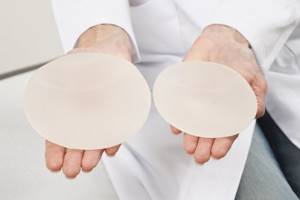
Prevention: how to avoid complications after breast augmentation?
A thorough medical history, conversation with a plastic surgeon, oncologist, mammologist - all these preparatory measures are aimed at reducing the risk of complications after breast augmentation. Our clinic has its own laboratory, equipped with the latest generation medical equipment. Therefore, you can undergo the examination in 1 day without queues, and get accurate results of comprehensive diagnostics in the next 1-3 days.
Plastic surgeons at the Pirogov Clinic guide patients at all stages of mammoplasty: from the initial consultation to postoperative follow-up examinations, so if you follow the recommendations of the attending physician, the risks and complications are reduced to almost zero.
Having breast augmentation surgery with us means not being afraid of complications and unidentified contraindications
The plastic surgery department of the Pirogov Clinic in St. Petersburg has been operating since 1999 and is recognized as the leading one in the city. Our doctors every month successfully perform breast surgeries of varying levels of complexity: from correction of the nipple-areolar complex to complex reconstructive surgeries. We are proud of our doctors and offer patients:
- discounts and promotions for all types of plastic surgeries;
- comfortable conditions of stay in a hospital for 1-2 people, the stay in which can be extended if desired;
- operating rooms and intensive care units equipped with new European equipment;
- support of patients from Russian cities by a curator at the stages of treatment, examination, surgery;
- interest-free installments.
To make an appointment with a plastic surgeon, you can leave a request for a call back through the website or call us on +7, contact center specialists will answer your questions.
How likely is the filler to leak from the implant?
This issue still remains relevant. At the dawn of the development of implants, violations of the integrity of the shell rarely occurred; this was due to imperfect technology and the rupture could be caused by the following reasons:
- the longest possible stay of the endoprosthesis in the body;
- increased pressure on the implant during surgery;
- the presence of scars and folds on the product that can form weak points;
- severe external pressure on the chest, received in unpleasant situations, for example, an accident;
The described cases occurred rarely. American scientists examined hundreds of women for possible implant breakthrough. Patients had to undergo an MRI examination, which ultimately showed a violation of the integrity of the membrane in 0.5% of women.
Today, leading implant manufacturing companies provide a lifetime guarantee on the integrity of the shell, and only piercing wounds or medical manipulations in the form of puncture with a sharp needle can lead to rupture. But, fortunately, the gel in them is not current and there are no emergency situations for replacing implants. In such cases, routine replacement is recommended.
If, however, the product ruptures, the woman may feel some discomfort: compaction around the endoprosthesis, the appearance of the breast may change, a burning sensation, tingling, and numbness may appear. In such a situation, a woman should undergo an MRI or ultrasound examination. Then come for a consultation with a plastic surgeon and eventually replace or remove the implants. Experienced professionals always recommend getting examined once a year after surgery, as well as without breast implants.
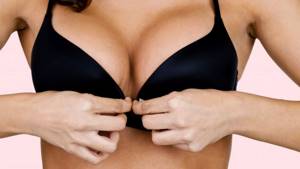
Long-term consequences of mammoplasty
Later consequences of breast enlargement occur after 3 – 6 months. The most common are:
- Capsular fibrosis This is the most common complication that occurs during breast surgery. The phenomenon of fibrosis is an individual reaction of a woman’s body to a breast prosthesis (foreign body). The prerequisites for the occurrence of such a terrible complication as fibrosis are: metabolic disorders, taking certain medications, and the presence of concomitant diseases. It is fibrosis that causes re-operation. With this complication, deformation of the glands and their tissues occurs. The formation of a capsule is mandatory - this is how the woman’s body reacts to a foreign body. But sometimes this capsule becomes much denser. It is quite easy to visually notice changes that have occurred in the chest and its deformation: the gland becomes dense and very painful to the touch.
Fibrosis can be prevented by choosing silicone textured dentures that have a rough shell. The roughness itself helps tissues and implants adapt faster, which in turn does not cause compaction of the capsule.Therefore, if capsular fibrosis occurs, it is necessary to urgently perform repeated surgery: the capsule is removed and the implant is reinstalled. It is unrealistic to predict fibrosis and its consequences in advance.
- Implant displacement and asymmetry This complication is not so dangerous, but occurs as a result of an incorrectly planned operation, incorrectly selected size of the prosthesis, and if the patient does not comply with the recommendations given by the doctor. The implant can move in any direction. Wearing compression garments and moderate physical activity will help get rid of the problem. If these recommendations do not help, then the patient faces surgery again.
- Double fold This complication is a characteristic deformation of the breast that occurs as a result of incorrect placement of the endoprosthesis. It is visually noticeable that the gland seems to “flow” over the implant, and the seams are also visible. Correcting a double fold is only possible with repeated mammoplasty.
- Symmastia Visually, the complication looks like the fusion of two mammary glands with each other. Reason for appearance: incorrectly selected dentures, large implants and their close location.
- Impairment or complete disappearance of sensitivity One of the most undesirable consequences of mammoplasty is impairment of sensitivity. It occurs as a result of disruption of tissue innervation. In most cases, the phenomenon is temporary, and the sensation returns after about 6 months without treatment.
- Keloid scar As a result of the individual characteristics of the body in the regeneration of connective tissue, keloid scars form. Treatment is local: steroid drugs are injected into the scars. Injections help smooth out the scar and are safe for the body. This complication can be treated in just a few procedures, and there are practically no scars left.
Severe pain after implant placement
Breast augmentation, like any other surgical intervention, requires the hand of a qualified specialist. After mammoplasty, a period is required for the body to get used to the implant and for the scars to disappear. The period varies and depends on the individual characteristics of each woman’s body.
Statistics show that most patients do not feel pain, discomfort or foreign body sensation in the long term. In the early period, there are moderate or minor pain sensations, which are comparable to the feeling when “re-exercising in the gym,” or older women who experienced changes in the mammary gland during pregnancy and lactation are compared to the feeling of arriving milk before feeding.
The first few days after surgery, women may experience pain, which can be easily relieved with painkillers prescribed by the attending physician. There are cases when postoperative complications are observed that require observation by a specialist, medication, or repeated intervention by a plastic surgeon. Studies have shown that 5% of patients required additional surgery within the first three years after breast augmentation. The main reasons for such circumstances were scars around the implant, capsular contracture, or the woman’s desire to change the shape or size of the implant again.
Contraindications to mammoplasty
It is not recommended to undergo breast replacement if:
- pregnancy and breastfeeding (after completion of lactation, breast augmentation surgery can be performed after 6-12 months);
- autoimmune diseases in the acute stage;
- infectious diseases in the acute stage;
- uncompensated bleeding disorder (for example, thrombophilia);
- oncological diseases;
- chronic diseases in the acute stage (for example, diabetes).
The operation should only be done after 18 years of age. Before reaching this age, endoprosthetics is not advisable, since there is a possibility that tissue growth and the process of formation of the mammary glands have not yet been completed. The patient should also be aware that surgical intervention should not coincide in time with the beginning of the menstrual cycle, since changes in hormonal levels and breast size increase the risk of postoperative bleeding and can negatively affect the final result from both an aesthetic and medical point of view.
Such contraindications are considered generally accepted, however, during a comprehensive preoperative examination, other individual risk factors and pathological conditions may be discovered in which mammoplasty cannot be performed.
Decreased nipple sensitivity after breast augmentation
Every woman experiences nipple numbness or hypersensitivity after surgery. Such syndromes are caused by damage to the small nerves running along the chest wall and leading to the nipples. The normal state returns within three to six months. In rare cases, restoration of sensitivity takes 1-2 years.
Experts recommend that women massage and stroke the sides of their breasts and ribs to restore sensation. Silicone nipple covers are necessary for hypersensitivity to reduce friction between the breast and clothing. After tingling and itching of the nipples, you can determine that the general condition is normalizing.
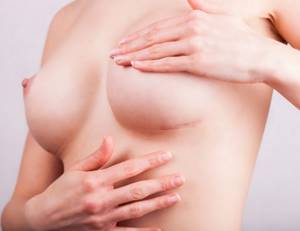
How is rehabilitation after mammoplasty?
The breast after mammoplasty needs restoration. At first it is hard to the touch, but when the breasts become soft depends on individual characteristics. On average, plastic surgery requires a recovery wait of one to three months. Since the implant is located under the muscles, they swell, become inflamed and tense. To quickly get rid of these unpleasant symptoms, a woman’s life must follow special rules.
How many days it will take to recover after breast augmentation surgery primarily depends on the size of the implant, the technique of their implantation and the quality of the operation. An important role is played by the state of the woman’s immunity and the presence of allergic reactions.
During the entire recovery period, you must follow the doctor’s special recommendations. Rehabilitation after mammoplasty by day looks something like this.
- The initial stage is considered to be the first day after a breast lift, when you need to stay in bed. In the first days after mammoplasty, in order to reduce the risk of bleeding, doctors recommend applying cold to the breast as often as possible. It reduces swelling and reduces pain.
- On the third day after surgery, pain intensifies and increased swelling is observed. It is imperative to monitor body temperature and, if necessary, take antipyretics and painkillers. Caring for the bust and postoperative sutures is important. It is recommended to tighten the chest with special elastic bandages and from this period it is necessary to wear compression garments.
- You can take a shower after mammoplasty from day 5. The seam must be sealed with adhesive tape. Those who wash the seam with water run the risk of infection. You cannot wash your hair yourself, as during this period you cannot raise your hands. When can you raise your arms above your shoulders? The restriction will last approximately until the end of the first month. You can't bathe in the bathroom for 1.5 months. After water procedures, you should dry all the seams thoroughly, you can use a hairdryer. In the patient's review of.
- Rehabilitation after mammoplasty in the first week must be carried out with special care. These days there is a high risk of developing infection and bleeding. Women who have undergone breast augmentation surgery may experience swelling and bruising. But they should pass soon. After 7-10 days, stop taking medications. Until this time, anti-inflammatory, antibacterial or painkillers may have been prescribed. Exercise is still prohibited.
- After the 11th day of mammoplasty, the risk of complications is minimal. At this stage, you can begin to perform light gymnastics. Swelling subsides, and minor chest pain may only bother you at night. In a month, when the stitches are removed, you can raise your arms. In this case, the load in the hands should not be more than 1.5 kg.
- After 1.5 months, the rehabilitation period after mammoplasty is coming to an end. By this time, the swelling will have passed, and pain will occur less frequently. Feeling better. There may be a feeling of numbness in the nipples, but this should go away soon.
The final result after mammoplasty can be judged only after 3-4 months. By this time, the normal life to which the woman is accustomed should gradually return.
If the recovery period passes without complications and severe pain, and the scars heal quickly, then removal of the sutures will be painless. After how many days are sutures removed? The stitches are removed on days 7-10. Breast surgery is performed with internal and external sutures. You should not settle for external sutures that dissolve on their own. This process lasts about two months. During this time, various infections and dirt can stick to the threads, causing inflammation.
From the reviews: “A friend had her breasts enlarged by two sizes, the recovery was successful. The result is excellent. I’ll definitely do mammoplasty after waiting for a few days.”



